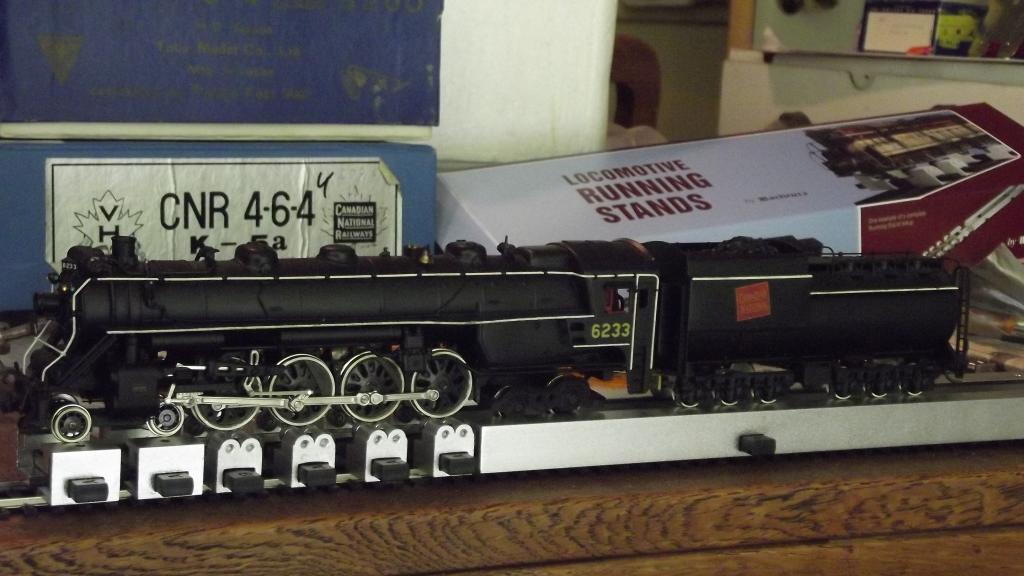Rolling Road
Summary: A Rolling Road is a series of test stands that allow a locomotive to be operated in a stationary position for tuning or adjustment
A Rolling Road is a test setup for a locomotive that allows it to be operated without actually moving. Its driving wheels rest on and pick up power from ball bearing mounts. This is very useful for testing DCC decoder functions, especially sound.

In the days of steam, some shops had a length of test track coated with grease. A freshly shopped locomotive would be driven onto the test track, and the throttle opened up. Since there is little friction between the rail and drivers, the drivers slip. This allowed the shop crews to simulate miles of travel over a few minutes and a short distance. Adjustments could be made and quickly assessed in this manner.
One manufacturer of rolling roads was Bachrus Inc., which made saddles to support the wheels, and other accessories. Bachrus also offered a digital speedometer, which can be used for break-in, trim adjustments, and speed matching locomotives. It was offered as a standalone unit, or as a USB interface to JMRI.
- Unfortunately the owner of Bachrus Inc. retired and there was no interest in purchasing the company. The product is no longer available.
Bachmann makes supports in two gauges (OO/HO and G) and in two varieties. Their E-Z Rider™ ball bearing stands are intended for locomotive driving wheels and the less expensive (non ball bearing equipped) ones are for supporting idle wheels (such as pony trucks and tender wheels). All are intended to rest on live track for full electrical pickup.